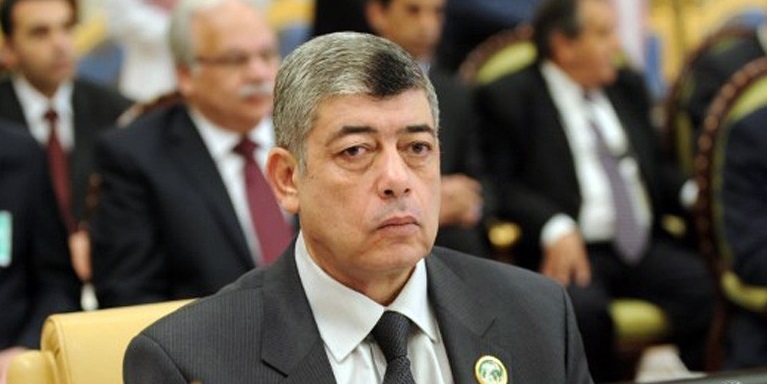CAIRO: Dandara Development & Investment Co. (DDI) is on the path toward irrigating parts of Upper Egyptian desert land and introducing new wheat alternatives, lupin and quinoa, with large potential for export and local use.
With such an initiative gaining momentum, Dandara CEO Hashem El-Dandarawy hopes to put Upper Egypt “on the map in terms of agriculture with the two projects.
Lupin, more commonly known in Egypt as termes, has high protein content and is commonly consumed as a mezze (appetizer) or drink. Still, El-Dandarawy says local production of lupin has been “highly neglected due to its poor market price and low per-feddan (a non-metric a unit of area, varying in value from 2,295 to 3,443 square meters) output.
As a result, lupin has instead been imported.
“It has two benefits, he says of the agricultural project. “It introduces new varieties of crops to national output, and it is an innovative contribution to the wealth of agriculture in Egypt.
The company began the process of investigating lupin growth potential in cooperation with Danish company Eghojgaard three years ago, under the Royal Danish Embassy’s business to business program. There is large research into lupin within Danish universities.
Dandara with Eghojgaard tested different strands of lupin along with cross-breeds of Egyptian/European strands until the best producing combination was found.
El-Dandarawy explains that the new seeds will produce up to 4.5 metric tons per feddan, as opposed to the original seed which produced a maximum of 1.5-2.3 Egyptian metric tons per feddan.
Lupin is being considered as an alternative to importing soya beans, and would be especially viable for animal feed.
Another advantage to growing lupin is that it has a “maximum nitrogen fixation, which means it replenishes soil by converting nitrogen into ammonia.
Ten feddans in the desert and 10 feddans on soil are allocated for seed production while 50 feddans are currently being harvested.
On one of Dandara’s visits to Chile in regards to lupin, the company discovered quinoa, a wheat substitute, Dandara’s newer, focal project.
The company’s plan is to begin with Upper Egypt, before eventually moving in to the Sinai and North Coast regions. The company is in its first year of producing the seeds and will start supplying seeds to interested companies next year. They are expecting to sow approximately 5,000 feddans within the next few years.
El-Dandarawy admits he was “not sure it would be grown successfully, at first. The project started in negotiation with a Chilean research company assessing 78 different seed varieties of the plant. Eventually four of the most successful varieties were selected for Egyptian soil based on “output, health, resistance to changing conditions, and early output. The current crops have a 3-month production cycle, ready for harvest just 3 months after planting/sowing.
The emphasis though is that the plants be grown organically, says El-Dandarawy. This is especially a concern for exportation, as the European market demand depends on the quinoa being organic.
While Peru and Bolivia are the largest exporters of quinoa, El-Dandarawy explains that South America “cannot cover the growing organic demand. Dandara will repurchase the harvest and export as a packaged product.
Though quinoa is being produced as a cash crop initially, Dandara plans to begin an awareness campaign to encourage demand and “the acceptance of Egyptians for quinoa’s use in local products like bread, in order to ease reliance on imported wheat. Currently interested in importing from Egypt are France and Italy, as well as Denmark.
El-Dandarawy suggested that he was not worried about the cash crops replacing local subsistence farming. First, he says the allotted land is on marginally fertile land (leaving the particularly fertile land for other crops). Second, the focus will be on sowing between olive trees.
Quinoa is grown primarily for its seeds but its leaves can also be eaten as a leaf vegetable. Originally a South American grain and used even among the pharaohs, its popularity is spreading to North American and European markets for its high nutritional value, at 12-18 percent protein content.
Labeled by the UN a “supercrop, quinoa also contains fiber, phosphorous, magnesium, and iron, unlike traditional wheat or rice. Additionally, it is particularly resistant to disease, having a “saponin, or coating, with a bitter taste unfavorable to birds and pests.
A further potential stage in quinoa production is developing industrial agriculture through the process of mechanically removing the saponins.
Concurrently, Dandara is working with Canadian partners on a large-scale LE 500 million land reclamation project which will irrigate desert land for organically grown lupin, quinoa, and other crops, also in Qena province.
They have received the first-ever government permit to a private company to irrigate land from the Nile River, in terms of building an off-tank area with pumping stations. For 40 years, the company will have the pumping rights to 25,000 feddans on a Bill of Operation and Transfer (BOT) basis, after which the pumping stations will be turned over to the government.
Plots of 5,000 feddans will be allocated to mostly foreign investors each responsible for their own plot. El-Dandarawy explains that European partners have the know-how, management skills, and access to and understanding of international markets needed to make the project successful.
What made the deal possible was “recently expanded government views on private ownership and private sector partnership, says El-Dandarawy. Dandara is working with Canadian company Experco
The reason for starting projects in Upper Egypt has to do with family “roots, says El-Dandarawy, adding “we are all from Upper Egypt. He is also proud that all products will be called Dandara, after his own Qena village.
“We use the land and labor of Upper Egypt, at least we can give credit back.
